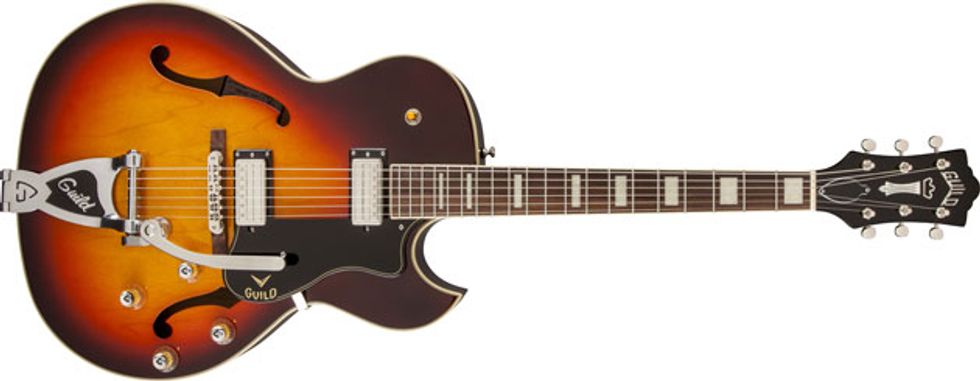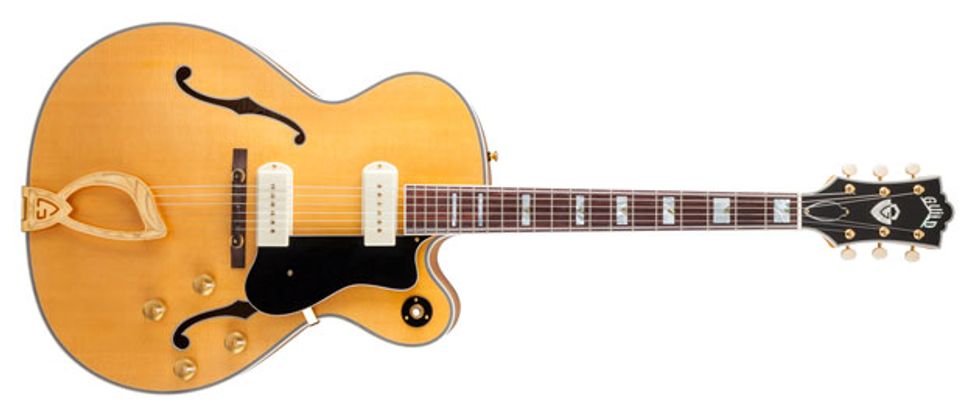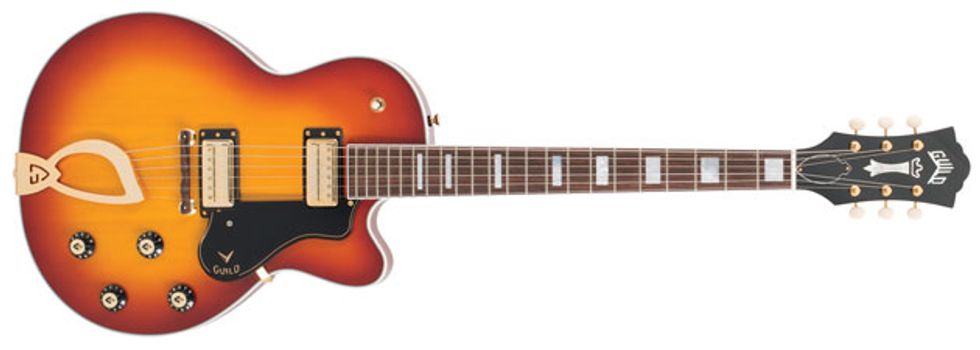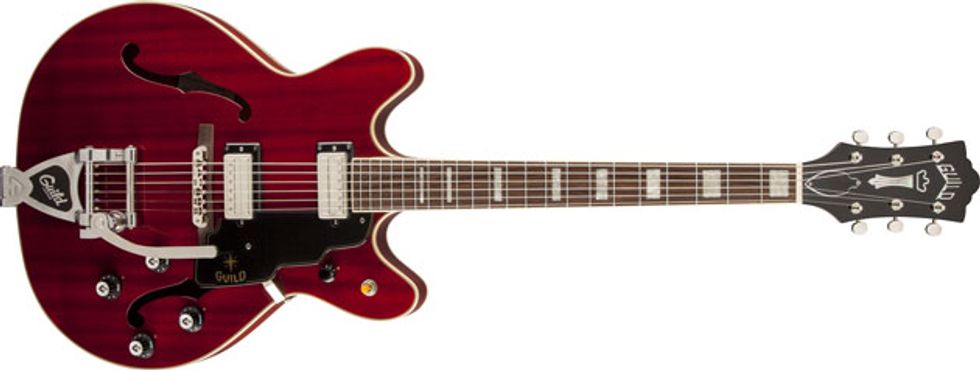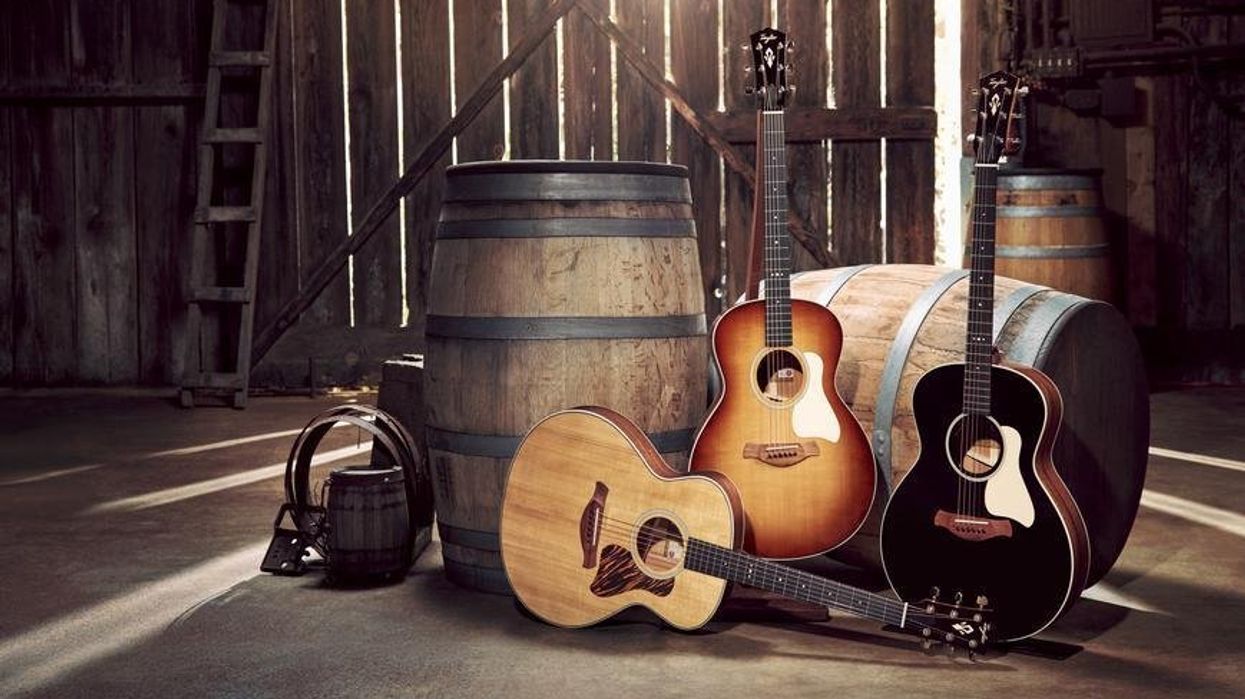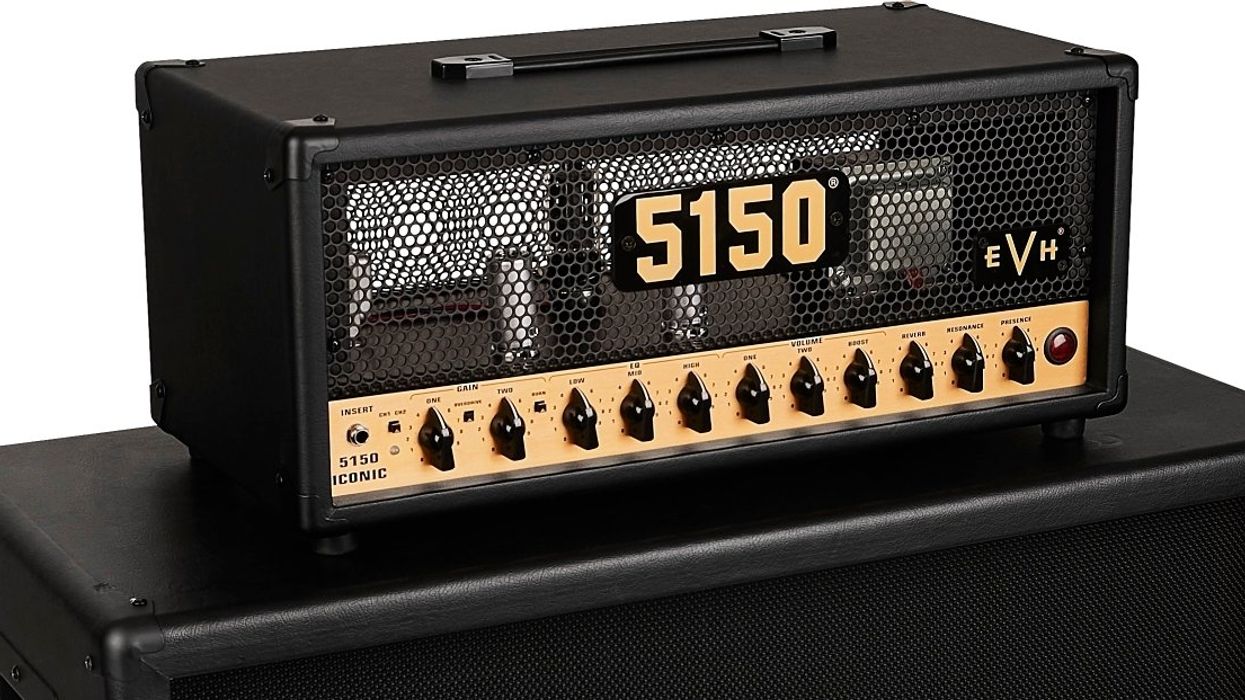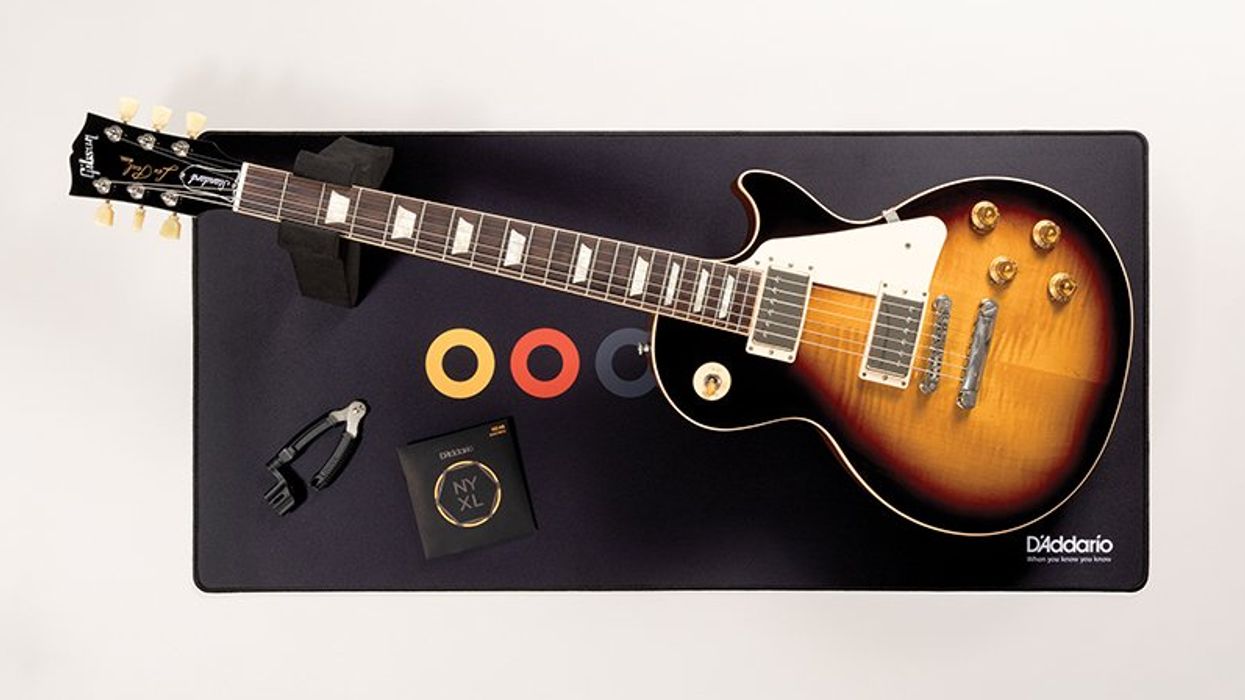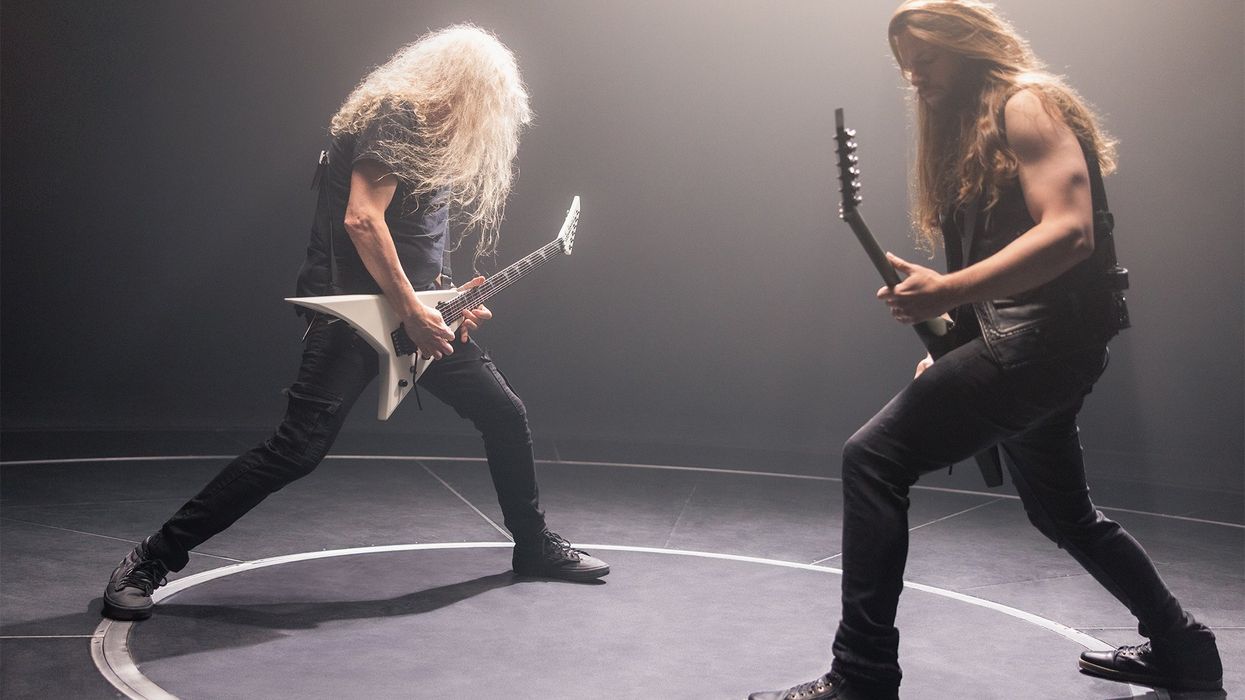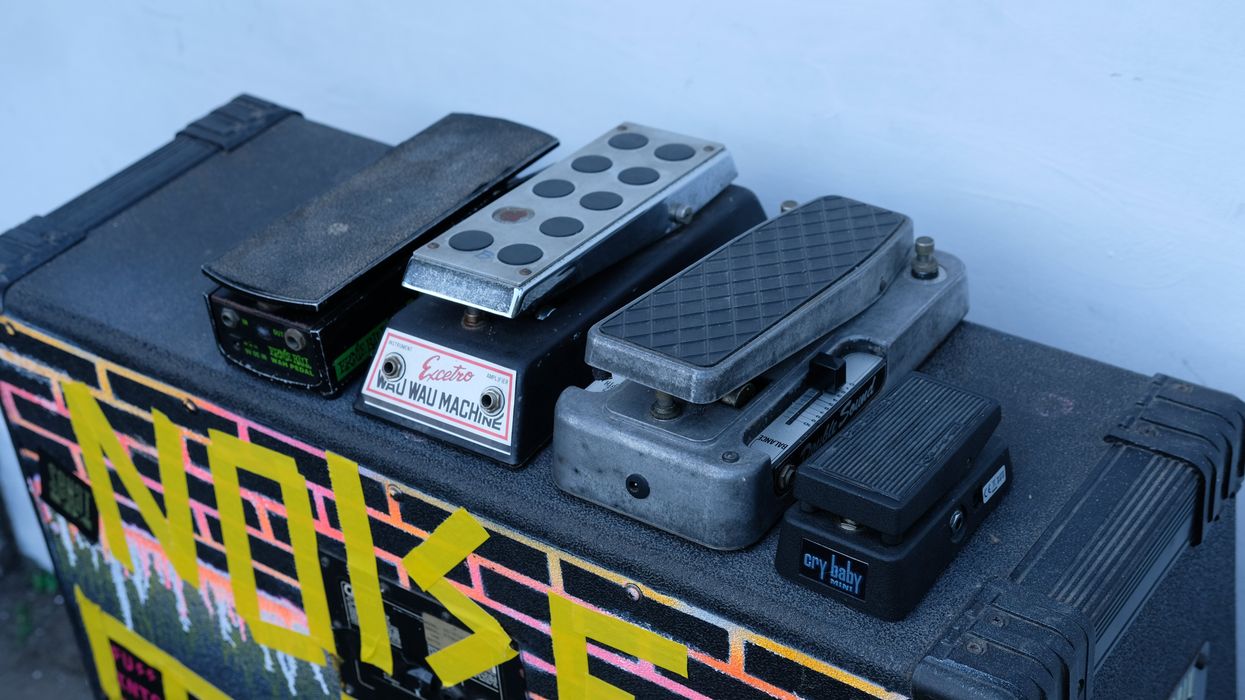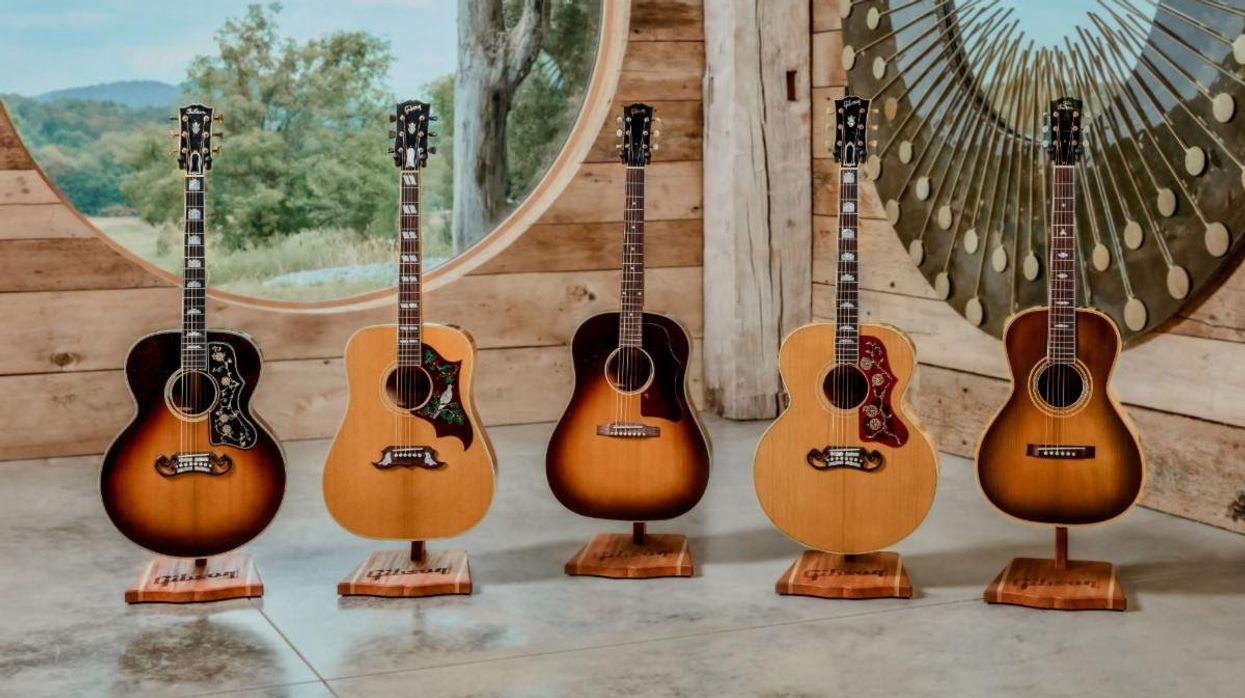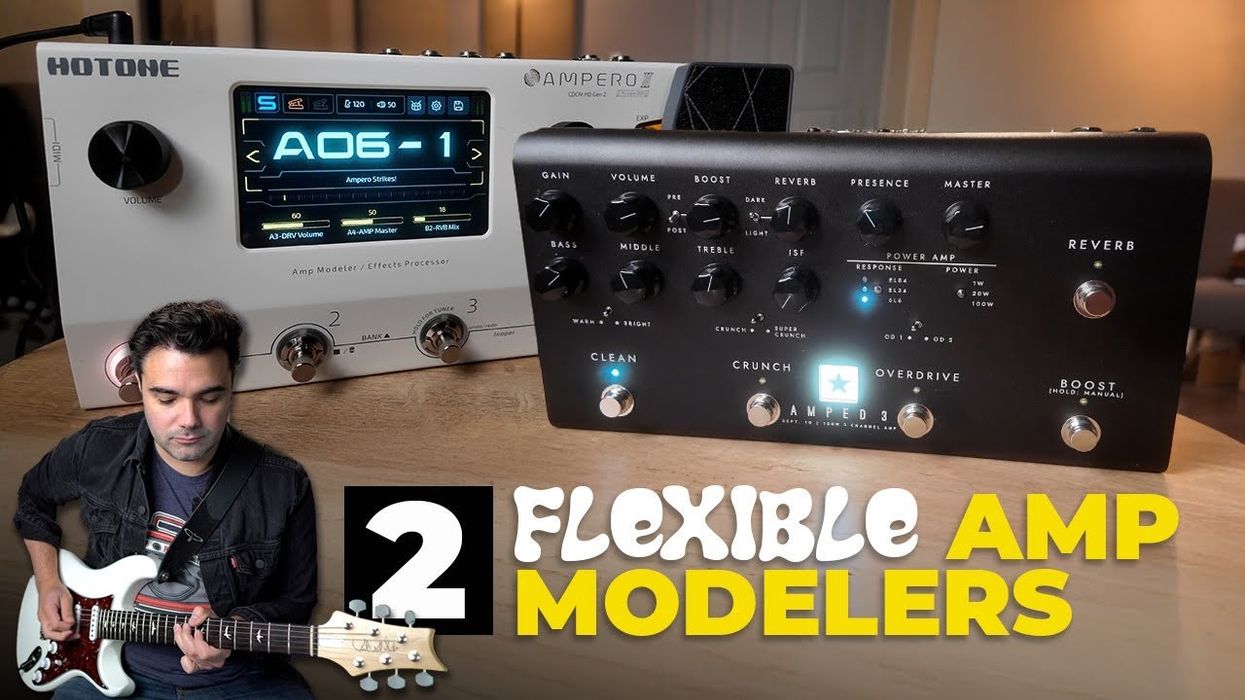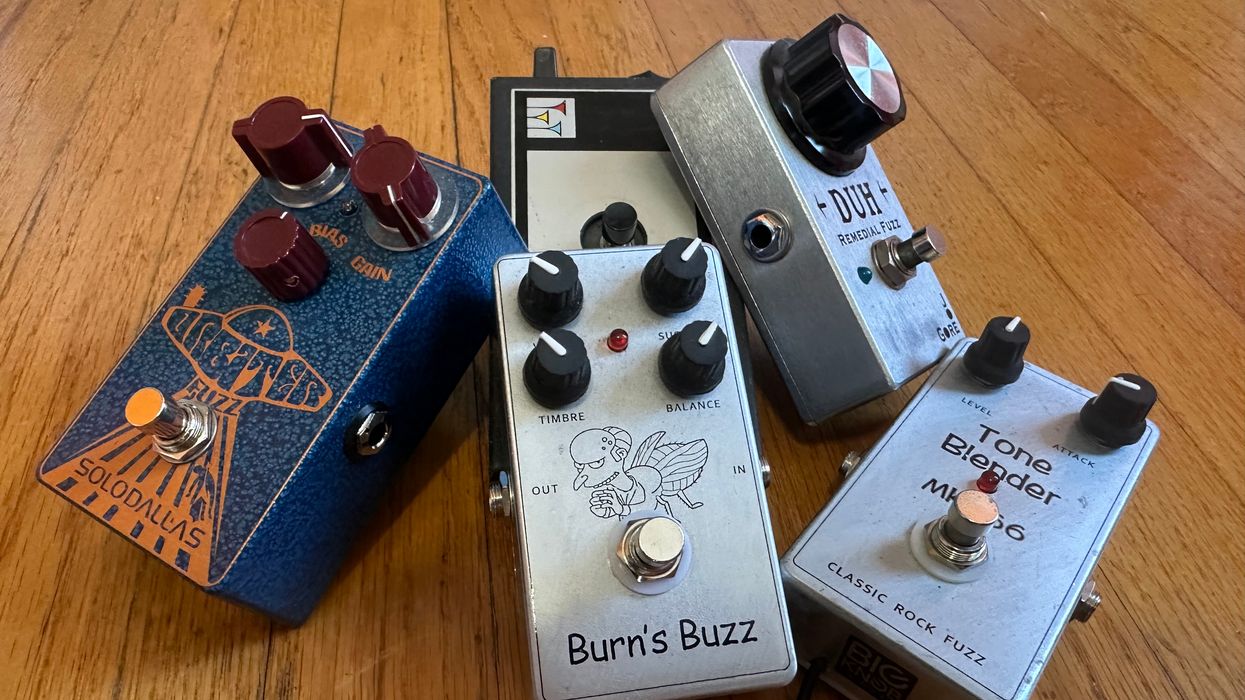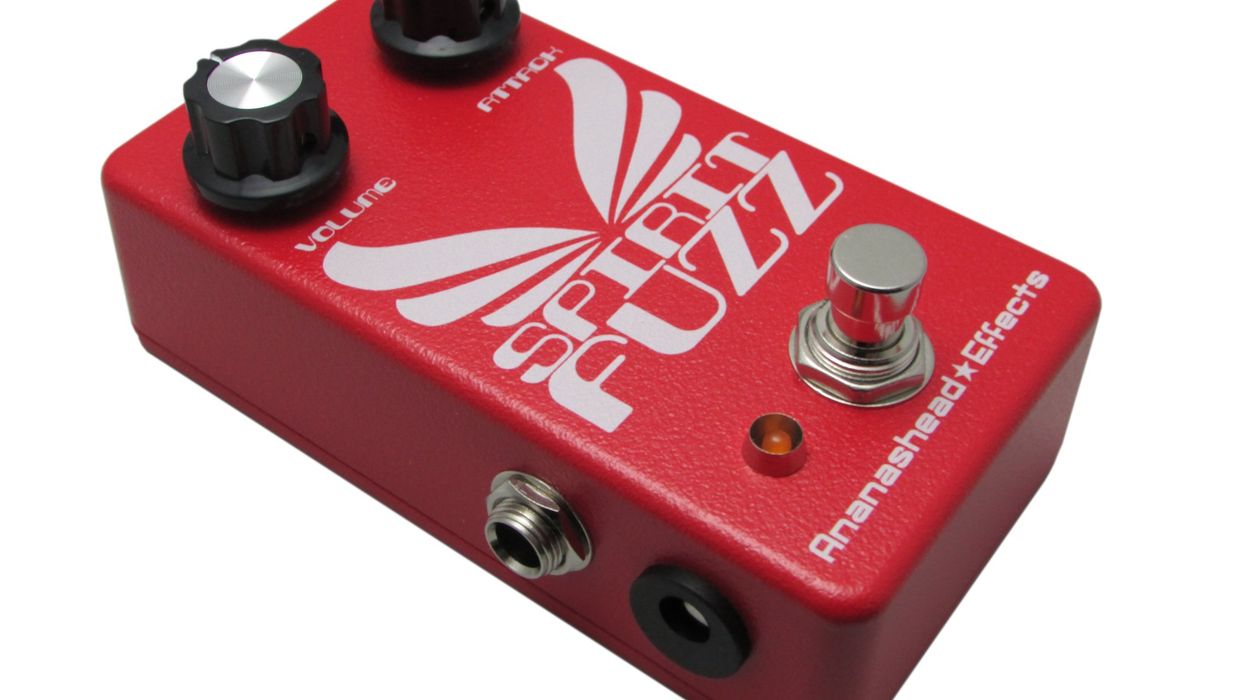Scottsdale, AZ (January 16, 2014) -- Guild is proud to announce new guitars and basses in the Newark St. Collection and Guitar Special Run (GSR) series.
The Guild Newark St. Collection marks the return of classic Guild electric favorites from the 1950s and ’60s—once again putting the distinctive Guild styling and voice that helped shape popular music into the hands of today’s guitarists. GSR series guitars are distinctive limited-edition versions of some of Guild guitars’ most sought after and revered models. These exceptional instruments feature special and exotic wood selections and custom appointments not available on standard models, resulting in exciting new guitars that take the Guild legacy to new heights of elegant sound and performance.
The classic Guild Starfire V with Bigsby is a semi-hollow beauty with a graceful 16 3/8” thinline body and twin Guild “Anti-Hum” dual-coil pickups, arched top and back with dual f holes, elegant ivory white body binding, black/white purfling and center-block bracing, bound three-piece mahogany/maple/mahogany neck with vintage-style “soft U” profile, 22-fret rosewood fingerboard with 9.45” radius and pearloid block inlays, three-way pickup selector switch, individual volume and tone controls for each pickup and master volume, Adjusto-Matic bridge with rosewood base, Guild Bigsby B70 vibrato tailpiece, Grover Sta-Tite tuning machines, nickel hardware and a gorgeous Transparent Cherry Red gloss finish.
Guild’s CE-100D Capri with Bigsby “old world”-style 16 3/8” cutaway body makes it comfortably easy to hold and play, and its twin Guild “Anti-Hum” dual-coil pickups sing with a full, clear voice. The Capri’s all-maple body features an arched top and back with a comfortable 3 1/8” depth and sharp-looking Florentine cutaway, with dual f holes and elegant ivory white body binding and black/white purfling. Other premium features include parallel tone bar bracing, bound three-piece mahogany/maple/mahogany neck with vintage-style “soft U” profile, 20-fret rosewood fingerboard with 9.45” radius and aged pearloid block inlays, three-way pickup selector switch and individual volume and tone controls for each pickup, Adjusto-Matic bridge with rosewood base, Guild Bigsby B60 vibrato tailpiece, Grover Sta-Tite tuning machines, nickel hardware and a stunning Antique Sunburst gloss finish with gloss Walnut Stain back and sides.
The limited edition M-75G Aristocrat LTD Gold features a luxurious gold metallic top with lightly stained mahogany back, sides and neck offset with nickel hardware. This unique compact guitar has a gracefully sculpted hollow body designed specifically to produce the resonance of a larger sized instrument. Other features include a 17” x 3 1/8” hollow body with venetian cutaway, select spruce top, mahogany sides & back, 3-piece mahogany/maple/mahogany neck, twin Guild “frequency tested” single-coil pickups with individual volume and tone controls, 3-way pickup selector, rosewood bridge, Guild “harp” tailpiece and Grover Sta-Tite tuning machines.
The companion to Guild’s M-75 Aristocrat guitar, the M-85 Bass boasts authentic mid-‘60s style with a compact semi-hollow body and big “Bi-Sonic” bass pickup that together create the sonic boom of an instrument twice its size. The single-cutaway body measures 2.75” deep and a mere 13.5” across the lower bout, with an arched spruce top and maple back and sides. The body also features elegant ivory white body binding, black/white purfling, partial center-block bracing and dual finger rests. This distinctive bass also features a 30.75” scale length, bound three-piece mahogany neck with a vintage-style “soft U” profile, 21-fret rosewood fingerboard with 12” radius and pearloid dot inlays, volume and tone controls, combo bridge/tailpiece with rosewood saddles, Grover tuning machines, nickel hardware and cool Jet Black gloss finish.
The limited edition run of the GSR M-75 Aristocrat is an extra-elegant take on a true Guild classic. The compact Aristocrat-style hollow body has a single cutaway and an arched laminated spruce top with parallel tone bar bracing, mahogany back and sides and stately black-and-white binding. The bound three-piece mahogany-maple-mahogany neck has a comfortable profile and a 9.5”-radius rosewood fingerboard with 22 medium jumbo frets and handsome pearl block inlays.
Strike gold with Guild’s very special limited edition run of the GSR X-500D Stuart LTD. The single-cutaway hollow body has an arched laminated spruce top with parallel tone bar bracing and stylish f holes, flame maple back and sides and stately black-and-white binding and purfling. The five-piece maple mahogany neck has a comfortable profile and a 9.5”-radius ebony fingerboard with 20 medium jumbo frets, black-and-white binding, special fingerboard purfling and pearl “V” block inlays.
The GSR X-150D Savoy offers fine appointments including a Guild Bigsby tailpiece make for a distinctively cool look, and the dual Guild humbucking pickups with three-way upper-bout toggle switching provide a distinctively cool sound. The single-cutaway hollow body has an arched laminated spruce top with parallel tone bar bracing and stylish f holes, flame maple back and sides and stately black-and-white binding. The bound three-piece mahogany-maple-mahogany neck has a comfortable profile and a 9.5”-radius rosewood fingerboard with 20 medium jumbo frets and handsome pearl block inlays.
The compact Aristocrat-style hollowbody in the limited edition run of the GSR M-85 II Bass has a single laminated spruce arched top with parallel tone bar bracing, mahogany back and sides and stately black-and-white binding. The unbound three-piece mahogany-maple-mahogany neck has a comfortable profile and a 9.5”-radius rosewood fingerboard with 21 medium jumbo frets and mother-of-pearl dot inlays.
For more information:
Guild Guitars

